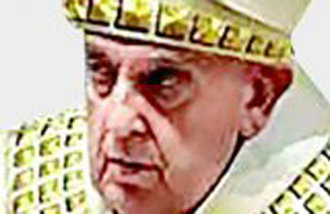Loyalty to art patron
Loyalty to art patron
Posted February. 29, 2024 07:46,
Updated February. 29, 2024 07:46

A woman stands holding a white dog, luxuriously adorned with a fancy dress and jewelry. While the pet only stares at the owner, the lady looks out from the canvas with only her torso facing the dog. The blue dog lash of affection connects them. Who is this posh lady dressed up?
“A Woman with a Dog” is one of the leading pieces painted by 18th-century Rococo artist Jean-Honoré Fragonard in his 30s when his career reached its peak, sponsored by noblemen including Madame de Pompadour, the official chief mistress of King Louis XV. This pink silky dress with an outstandingly high stand-up collar of white color was not in fashion during his time but is somewhat reminiscent of a royal dress worn by a 17th-century French queen.
This painting is known as one of the 18 renderings of “The Fantasy Figures” that he painted at the age of 37. This series of paintings portrays people from all walks of life, such as a young girl reading, an actor, a singer, an artist, a general, and a noble lady wearing luxurious clothes. Although they were born out of his imagination, there must have been a source of inspiration for the artist. Up until the early 20th century, scholars assumed that he was inspired by his sister or aunt. However, he did not have sisters or aunts. Plus, it was even before his daughter was born. Recent research shows that she is Marie Emilie Coignet de Courson, a noblewoman who ran a salon for social gatherings of noblemen and commissioned this painting. It is incredible how Fragonard depicts this lady with sunshiny and bright strokes.
More surprisingly, Fragonard completed this artwork in less than an hour to show off his breathtaking talent. He painted so quickly that he was called the master of speed. Despite a flurry of fast and quick strokes, he expressed the model's face as elaborately as possible to win over the heart of his patron. He might have felt the same way as the pet dog who can’t take his eyes off his owner and wants his attention so badly. This painting may be a self-portrait of the artist dying to impress his sponsor with his deep loyalty.
Headline News
- Korean president faces debate limitations unlike U.S. counterpart
- KEPCO's first quarter profits failed to meet market expectations
- Teenagers are left out of discussions about national pension
- 2 consultative bodies submit minutes regarding increasing number of medical students
- Woo Sang-hyuk's rivalry and friendship transcend borders







